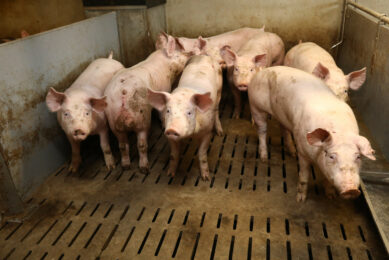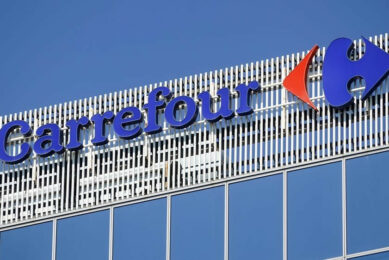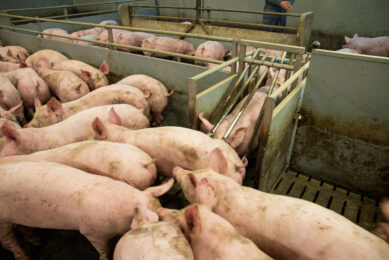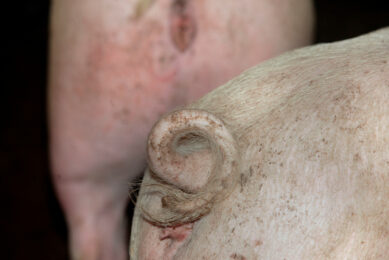‘2013’ coming too quick for many French producers
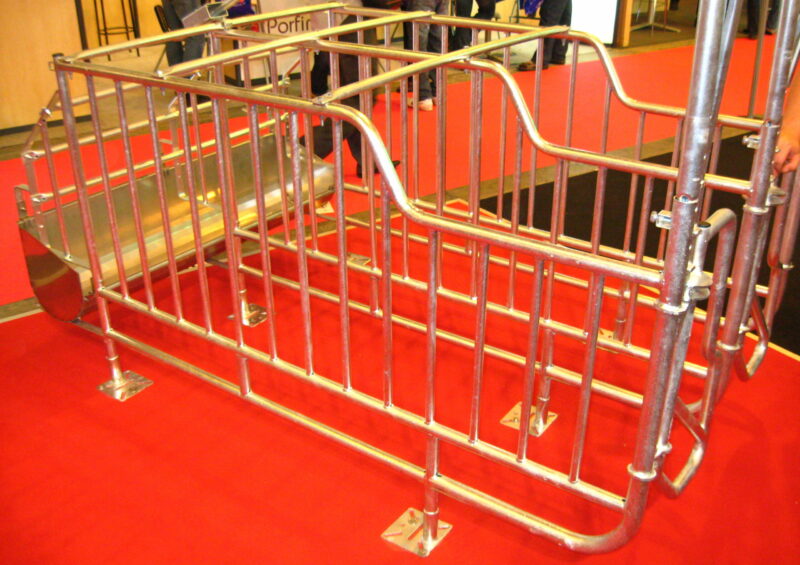
Deux mille treize – two thousand and thirteen. This was probably the most frequently used number at SPACE this year. The annual French livestock show in Rennes, France (13-16 September), took the opportunity to zoom in on the urgency to switch to sow group housing, as the deadline of 2013 is approaching.
It depends on how you look at it of course. For professionals from e.g. Denmark, Sweden or the UK, where the vast majority of breeders have already switched to group housing, a conversion rate of about 30% of the sow breeders could sound astonishingly low. This means that 70% will still have to convert to group housing in just over one year’s time. By January 2013, all gestating sows in the European Union have to be kept in group housing facilities.
In France, however, 30% is seen as a positive development. Conversion has gone up to 30% from 18% in 2008 and several French companies indicated at SPACE that the percentage is about to grow rapidly in the next months. Jan Dequeker, area manager for French livestock equipment company I-Tek, even divided France’s most important pig producing région, Brittany, into its four départements – and could tell where major progress has been made. He said: “Département 22 is called Côtes d’Armor, and there producers are really well on the way, with 30-40% being converted.
Département 29, Finistère, is doing pretty well too, this is mainly related to administrative reasons and subsidising.” As for the other two, Morhiban (56) and Ille-et-Vilaine (35), Dequeker said he started noticing the first serious steps at this 2011 SPACE edition.The more producers, the more opinions about the new legislation, Dequeker explained. “You don’t have to say anything to the most forward-looking producers – they have already converted to group housing. There’s a second category of producers that really feels 2013 as mandatory and nothing else – and a third category that may adjust things just enough only to make it until the end of their active professional life.”
Strategies
Recent research, published in 2010 in the French scientific journal Journées de la Recherche Porcine (JRP) identified three main strategies French sow producers like to choose from. A well-known and well-marketed option includes the installation of free access stalls. Of those converted to group housing, about 30% chose this option, see the top photo for an example. Choosing Electronic Sow Feeding (ESF) stations (in the middle photo an example by Acemo is shown), is another option.
In French, they are called distributeurs automatiques de concentré or DAC and about 20% of French producers opted for this solution.The majority of converters, however, have moved to a relatively inexpensive and easy transition solution, which is characterised by keeping sows in slatted-floored boxes between 14 to 20 m2 in groups of six to eight. Often, only the troughs have separated feeding spaces with short stalls, as can be seen in the bottom picture. Engineer Marie-Estelle Caille, one of the authors of the article in JRP, and associated with the Regional Chamber of Agriculture for Brittany, in Vannes, France, said that about 40% of them had chosen this option. Simplicity, a sense of control and affordability are three main features of this solution. Simplicity speaks for itself as the system only requires more space than a system with sows in stalls. The sense of control is related to the fact that groups consist of a limited number of groups of relatively homogenous sows. The system can serve both liquid or dry feeding. A disadvantage would be that the distribution system and only partial stalls must allow all females to simultaneously access the trough during meals to promote equivalent consumption for all sows, a limitation of feed competition.
The third reason, affordability, is only relative, Caille told Pig Progress. “Unfortunately some farmers do not have enough room for this system and have to construct an extra building to accommodate 40% extra space that is needed.” She continued, “Much work has been done to convince farmers that sows in groups can be technically efficient, e.g. studies in stations, surveys, technical and economic references etc. Sow breeders don’t have the money to buy the necessary equipment. That’s because of the crisis in French pig production, which has been going on since about 2007. Feed prices have been too high and pig prices have been too low. So we don’t know how many pig producers will convert.”
Research
Caille has closely been monitoring the development in contemporary sow breeding in west France. Since 2003, when the ‘2013’ legislation was translated into French law, six surveys have been carried out with French pig farmers – and pros, cons and new experiences have been summarised in the aforementioned article in JRP:
• It is more difficult to maintain the correct temperature when fewer animals can be kept in groups. Tests at 11 sow farms in the winter of 2008-2009 showed temperature differences of up to 5 degrees Celsius exist within the same bulding.
• Behaviour of sows is changing as they will interact. Different strategies can be applied for each of the three chosen management systems. For ESF, for instance, a choice can be made between static and dynamic groups.• With sows walking round, displaying different behaviour and temperature changes, different feeding challengeshave come up and need to be addressed.
• Human-sow relationchanges dramatically when using an ESF system, as e.g. the training of gilts requires close contact for a while.
• Other practical consequences need to be considered, e.g. wet floors and resulting leg problems, fights, genetics.
Collective maternity farms
An increasing number of French producers have also opted for the possibility to join forces and combine their breeding efforts. So-called maternity farms are cooperatively owned by producers who would like to be certain that they will receive piglets in time so their business is certain to continue. Research by scientist Marie-Laurence Grannec, published earlier this year and quoted in JRP, revealed that on average in Brittany and Pays-de-la-Loire, these maternity farms have 662 sows, and their number has been growing rapidly over the last couple of years. In Brittany, Grannec said, about 12% of producers have opted for this solution, mainly in pig-dense areas.
For those producers, still hesitant to convert, these ideas may help them make a choice and open up the path for the future. For others, however, they may help them to make the reverse decision – to quit the pig business. “We do know that a number of sow producers will stop producing, that’s for sure,” concluded Caille. “But how many – that’s still the big question.”
For some innovations and other impressions from SPACE, go to
www.pigprogress.net/photo-gallery
www.pigprogress.net/photo-gallery
SPACE celebrating its 25th edition As a special treat for all visitors, the French livestock production show of SPACE had reprinted the 1987 posters announcing the first-ever edition of SPACE, in 1987. It showed Brittany as part of France, and pigs, sheep, cattle heading towards its capital Rennes. A perfect picture of the situation at the time, indicated Jean-Michel Lemetayer, president of SPACE since the show’s very first edition. In 1987, no such thing existed as a major trade show in the area where 80% of France’s pork producers, 70% of the country’s poultry producers and half of the country’s dairy producers were located. “The objective was to create a professional show, with focus on innovations, one that was different from a public fair.” The Salon de la Production Animale – Carrefour Européen(Show for Animal Production – European Crossroads) came into existence. The first edition attracted 260 exhibitors and 32,000 visitors – for Lemetayer ‘evidently’ the proof that the show has served a market from the very beginning. The 2011 version proved the formula has continued to perform well, as often heard this year was the phrase that SPACE has grown to become Europe’s second-largest livestock show after EuroTier. The 25th edition again attracted more visitors than last year: 108,907 professionals, with over 10,000 visitors from abroad, from over a hundred countries. French agriculture will continue to develop – very likely there will be an ongoing need for SPACE in the next 25 years, Lemetayer told Pig Progress. “I do not have a crystal ball of course – but for producers it will remain important to learn about new techniques, e.g. genetics, performacne, material, slaughter etc. The main point for livestock producers in the future will be to produce high quality food, through e.g. good sanitary quality. Agriculture, modernity, quality, that will continue to be our drivers.” |
Top award for Acemo ESF station French livestock equipment company Acemo won a prestigious three-star Innov’Space award at SPACE. The company’s Eliskool concept is a novel type of Electronic Sow Feeding station which combines a training sluice for gilts as well as an ordinary feeding station for older-parity sows. It has two entrances and two exits, but it only uses one trough. Gilts can thus be positioned physically adjacent to its stable sow group, get used to their group and to the feeders, without however receiving aggressive treatment by older sows. |



